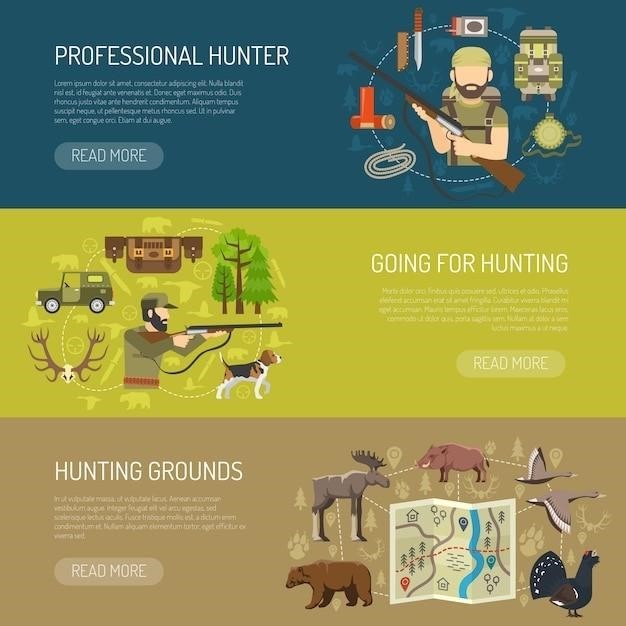A Guide Book of United States Coins⁚ A Collector’s Essential
This comprehensive guide‚ affectionately known as the “Red Book‚” provides invaluable resources for coin collectors of all levels. Since 1946‚ it has been the trusted source for detailed coin specifications‚ historical background‚ high-resolution images‚ and accurate mintage data‚ ensuring accurate valuations and insightful collecting experiences.
The History and Legacy of the “Red Book”
The “Red Book‚” officially titled A Guide Book of United States Coins‚ boasts a rich history spanning nearly eight decades. First published in 1946 by R.S. Yeoman‚ it quickly became the definitive resource for American coin collectors. Its enduring popularity stems from its comprehensive approach‚ combining detailed coin specifications with historical context and current market values. The book’s initial success established a standard for numismatic guides‚ influencing subsequent publications and setting a benchmark for accuracy and detail. Early editions focused on providing essential information for collectors‚ while later editions incorporated advancements in numismatic research and photography‚ reflecting the evolving field of coin collecting. The Red Book’s consistent updates‚ incorporating new discoveries‚ auction records‚ and U.S. Mint data‚ ensure its relevance and value to collectors across generations. Its legacy is cemented not only by its longevity but also by its role in shaping the landscape of coin collecting itself‚ empowering enthusiasts with the knowledge and tools to build informed and successful collections.
Key Features and Information Included
The A Guide Book of United States Coins‚ popularly known as the “Red Book‚” is renowned for its comprehensive coverage of U.S. coinage. Beyond just listing coin values‚ it delves into the historical context of each coin‚ providing insightful narratives that enrich the collecting experience. Detailed specifications‚ including precise dimensions‚ weights‚ and metal composition‚ are meticulously documented‚ allowing for accurate identification and authentication. High-resolution photographs showcase the nuances of each coin’s design‚ assisting collectors in assessing condition and identifying variations. Crucially‚ the Red Book provides grade-by-grade values‚ reflecting the impact of a coin’s condition on its worth. Mintage figures‚ reflecting the number of coins produced‚ are meticulously included‚ providing context for rarity and value. Furthermore‚ the book incorporates up-to-date auction records‚ offering insights into current market trends and helping collectors make informed decisions. This wealth of information makes the Red Book an indispensable tool for both novice and seasoned collectors.
Grading and Pricing Systems Explained
The “Red Book” employs a widely recognized grading system to assess the condition of coins‚ directly impacting their value. This system typically ranges from Poor (P) to Mint State (MS)‚ with numerous sub-grades within each category‚ reflecting the degree of wear and tear‚ as well as the presence of any imperfections. Understanding these grades is crucial for accurate valuation. The book provides detailed descriptions and illustrations of each grade‚ helping collectors accurately assess the condition of their coins. Pricing within the Red Book reflects these grades; a coin in Mint State 65 (MS65) condition will command a significantly higher price than one graded as Fine (F) or Good (G). Factors beyond grade‚ such as rarity and demand‚ also influence pricing. The Red Book’s pricing reflects market trends‚ incorporating data from recent auctions and sales. While the Red Book offers valuable pricing guidance‚ it’s important to remember that these are estimates. Actual market value can vary based on specific market conditions and the expertise of the appraiser or buyer.
Comprehensive Coin Listings and Specifications
The core of the “Red Book” lies in its extensive coin listings and detailed specifications. It catalogs a vast array of United States coins‚ encompassing a wide range of denominations‚ dates‚ and mint marks. Each entry provides comprehensive information‚ including detailed descriptions of the coin’s design‚ composition‚ and historical significance. The book meticulously documents variations within coin types‚ such as different die varieties or mint errors‚ which can significantly impact a coin’s value. High-resolution images accompany many listings‚ allowing collectors to visually compare their coins to the standard examples shown. Beyond standard circulation coins‚ the Red Book also includes listings and specifications for commemorative coins‚ proof sets‚ and other specialized issues. This comprehensive coverage ensures that the book serves as an invaluable resource for identifying and understanding virtually any United States coin. The inclusion of accurate mintage figures for each coin type aids in assessing its relative rarity and potential value. This attention to detail makes the “Red Book” indispensable for both novice and seasoned collectors.
Historical Background and Coinage Data
The “Red Book” goes beyond mere price listings; it provides rich historical context for each coin type. For each coin‚ the book delves into its design history‚ explaining the symbolism and artistic influences behind the imagery. It traces the evolution of coin designs over time‚ highlighting key changes and transitions in artistic styles and technological advancements in minting techniques. The historical narrative is interwoven with relevant events and economic conditions of the era‚ providing a deeper understanding of the coin’s place within the broader historical landscape. Beyond the design aspects‚ the book also offers insightful commentary on the economic forces and government policies that shaped the production of each coin type. This includes discussions on mintage figures‚ reflecting the demand and availability of coins at different points in history. The Red Book also often mentions significant events or personalities associated with particular coins‚ further enriching the historical narrative and making the collecting experience more engaging and educational. This historical perspective adds significant value to the guide‚ making it more than just a price guide‚ but a valuable educational tool.

Utilizing the Red Book for Coin Valuation
The Red Book is a cornerstone for coin valuation‚ offering grade-by-grade values‚ crucial for accurate assessment. Beyond grade‚ factors like rarity and market trends heavily influence a coin’s worth‚ making the Red Book an essential tool.
Understanding Coin Grades and Their Impact on Value
The Sheldon grading scale‚ a cornerstone of numismatics‚ is fundamental to understanding coin value. This 70-point scale‚ ranging from Poor (1) to Mint State 70 (MS70)‚ meticulously assesses a coin’s condition. Factors considered include surface wear‚ scratches‚ environmental damage‚ and overall preservation. A coin’s grade directly impacts its worth; a pristine MS70 coin commands significantly higher prices than a worn example. The Red Book provides detailed descriptions for each grade‚ enabling collectors to accurately assess their coins. Understanding these gradations is crucial‚ as a slight difference in grade can translate to substantial price variations. For instance‚ a coin graded MS65 might be worth considerably more than an MS63 coin of the same type and year due to the increased quality and rarity reflected in the higher grade. Accurate grading‚ often requiring expertise and potentially professional appraisal‚ is essential for accurate valuation and successful coin transactions.
Factors Affecting Coin Value Beyond Grade
While coin grade significantly influences value‚ several other factors play a crucial role. Rarity‚ determined by mintage figures and survival rates‚ is paramount. Low mintage numbers naturally increase a coin’s desirability and‚ consequently‚ its price. Demand‚ driven by collector interest and market trends‚ also significantly impacts value. Popular coin types or those with historical significance tend to command higher prices. The coin’s specific variety‚ including minor die variations or errors‚ can also affect value. Errors‚ such as misaligned dies or off-center strikes‚ often increase a coin’s worth dramatically‚ transforming it from a common piece to a highly sought-after rarity. Furthermore‚ the overall condition of a coin‚ including factors beyond the basic grade assessment‚ influences its worth. Factors like toning (color variations caused by oxidation)‚ eye appeal (aesthetic attractiveness)‚ and originality (the absence of cleaning or alterations) are frequently considered by collectors and appraisers. The Red Book offers insights into these variables‚ providing a more comprehensive understanding of coin valuation beyond simply the numerical grade.
Using Auction Records and Market Trends
The “Red Book” incorporates auction records to provide real-world data on coin values. Analyzing these records allows collectors to understand how specific coins have performed in recent sales‚ giving valuable insight into current market trends. By examining the prices achieved for similar coins in various conditions‚ collectors can establish a more accurate valuation for their own pieces. Tracking market trends helps predict future value fluctuations. Demand for certain coin types can rise or fall based on various economic and cultural factors. Understanding these trends can influence a collector’s buying and selling strategies. The Red Book’s inclusion of auction data allows for a better understanding of these market dynamics. Furthermore‚ the book often provides commentary on recent market activity‚ helping to interpret the underlying reasons behind price changes. This information is invaluable for making informed decisions about buying‚ selling‚ or holding onto specific coins. By combining grade‚ rarity‚ and market trends‚ collectors can develop a robust strategy for building and managing their coin collections.

Beyond the Basics⁚ Advanced Resources and Tools
While the Red Book is essential‚ supplementing it with online resources‚ professional appraisals‚ and connecting with fellow collectors enhances the numismatic journey‚ unlocking deeper understanding and expanding expertise.
Supplementing the Red Book with Online Resources
The “Red Book‚” while comprehensive‚ benefits from augmentation with online resources. Websites dedicated to numismatics offer real-time market data‚ auction results‚ and specialized forums where collectors share insights and knowledge. These digital platforms provide up-to-the-minute pricing information‚ often exceeding the Red Book’s publication cycle. Online resources frequently include detailed images‚ allowing for side-by-side comparisons with personal collections. Furthermore‚ access to extensive databases on coin specifications and historical context broadens understanding beyond the Red Book’s print limitations. Many websites feature tools for tracking coin values over time‚ a valuable asset for long-term collectors. Engaging with online communities fosters collaboration‚ allowing for the exchange of knowledge and experiences among enthusiasts. This synergy between the Red Book’s foundational information and dynamic online resources creates a holistic approach to coin collecting.
Utilizing Specialized Coin Appraisals
While the Red Book offers valuable guidance on coin grading and pricing‚ seeking professional appraisal provides an objective assessment of a coin’s condition and value. Professional numismatists possess the expertise to identify subtle details influencing a coin’s worth‚ often beyond the scope of a general guide; Their assessments incorporate factors like wear‚ strike quality‚ and any unique characteristics‚ leading to a more precise valuation. Reputable appraisers adhere to established grading standards‚ ensuring consistent evaluations across the industry. This professional evaluation adds a layer of certainty‚ particularly for valuable or rare coins where accuracy is paramount. Utilizing professional appraisal services can be beneficial when selling coins‚ offering a substantiated valuation to potential buyers. This professional opinion can also be crucial for insurance purposes‚ providing accurate documentation of a coin’s worth for claims purposes. Engaging a certified appraiser adds credibility and safeguards against over- or undervaluation‚ especially for significant pieces within a collection.
Finding and Connecting with Other Collectors
Networking with fellow coin enthusiasts significantly enhances the collecting journey. Joining local coin clubs provides opportunities to learn from experienced collectors‚ exchange knowledge‚ and access a wealth of information beyond the Red Book. These clubs often host meetings‚ workshops‚ and shows‚ fostering a community spirit and providing chances to buy‚ sell‚ or trade coins. Online forums and social media groups dedicated to numismatics offer another avenue for connection. These platforms facilitate discussions‚ sharing of expertise‚ and even virtual trading opportunities. Participating in online auctions can expose collectors to a broader range of coins and connect them with sellers worldwide. Attending coin shows and conventions provides face-to-face interaction with other collectors and dealers‚ enhancing learning and expanding networks. These events provide a chance to examine coins firsthand‚ gain insights from experts‚ and discover rare or undervalued pieces. Building relationships within the numismatic community strengthens one’s appreciation for coins and enhances the overall collecting experience.












